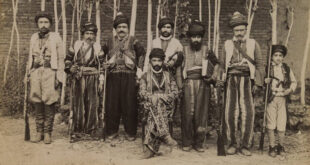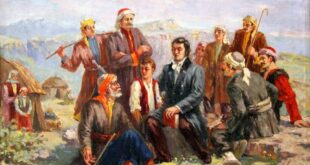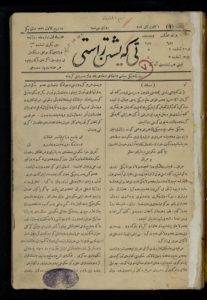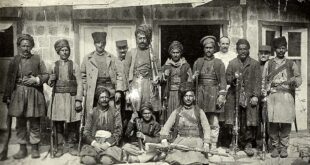Understanding the Truth, Issue 1, January 1, 1918
Têgeyştinî Rastî (Understanding the truth) was a semiweekly newspaper published by the command of the British army in Iraq in 1918–19. At the time, Britain was at war with the Ottoman Empire, which had ruled Iraq since the 16th century. When British forces began advancing north toward the Iraqi Kurdistan region in the spring of 1918, the paper became the mouthpiece of the British Empire, propagandizing in support of British positions when dealing with political, social, and cultural issues. The paper sold for one ana, or four fils, a very small amount at the time. The paper’s headquarters was in Baghdad, on present-day Nahr Street, in the same building as the Jareedet Al-Arab newspaper. The paper’s masthead contained no mention of the names of the owners, editor-in-chief, or editorial board, and articles were not published under bylines. It is known, however, that a Major Soane was the editor-in-chief, and that he prepared the entire paper for publication. Soane had mastered Kurdish, and he was assisted in his work by the poet and literary figure, Shukri Fadhli. Intended to serve as a media and propaganda arm for mobilizing the Kurds against the Ottoman Turks, Têgeyştinî Rastî attacked the Ottoman Empire in its news stories and articles. It also used the glorification of Islam and the promotion of Kurdish national feelings to try to win the hearts and minds of the Kurdish people. It went so far as to publish the names of several British officers who had converted to Islam and adopted Islamic names. The paper took a hostile stance toward the October Revolution in Russia; tried to appeal to tribal leaders, elders, and other leaders with influence in the Kurdish community; and depicted the British army as a liberator of the Kurds from Ottoman control. It promoted Kurdish literature and the poetry of Al-Haj Qadir Al-Koobi and Nali Rimhawi Ka, and it was the first Kurdish paper to write about the history and origins of the Kurdish people.
 History of Kurdistan
History of Kurdistan




